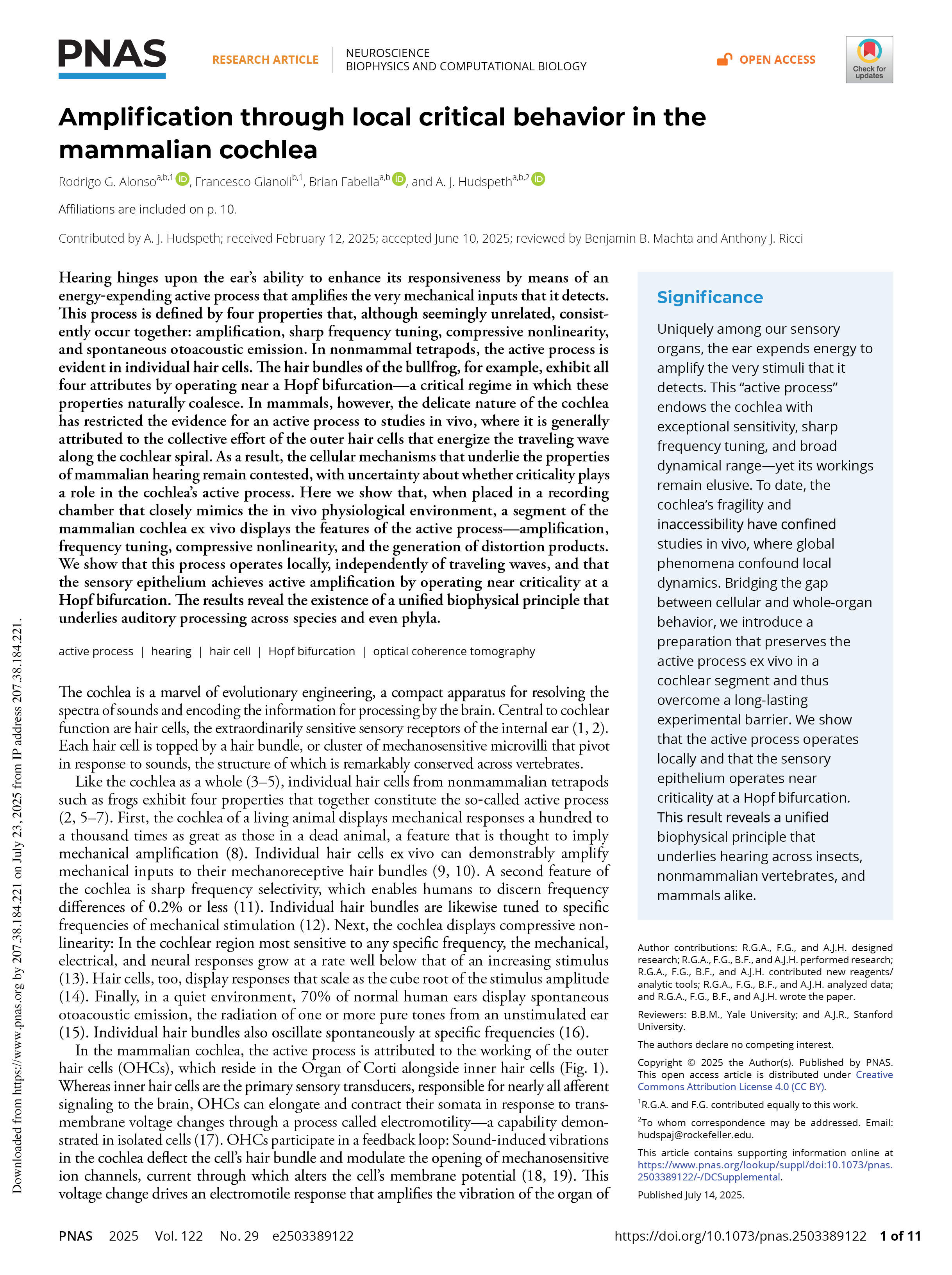New paper out!
Alonso, R. G. and Gianoli, F., Fabella, B. & Hudspeth, A. J. Amplification through local critical behavior in the mammalian cochlea. Proceedings of the National Academy of Sciences 122, e2503389122, 2025.

Your ear 👂 has an in‑built amplifier 🎤 needed to detect sounds 🎶. Without it, hearing loss begins—yet we still don’t understand how it works.
Bulding on our previous work, we have now overcome a decades‑old experimental barrier by developing a technique that lets us examine the ear’s amplifier outside of the living body and watch it in action under the microscope.
With this breakthrough we were able to reveal that the ear works right at a physical “sweet spot” known as criticality, where it acquires the astonishing features that define hearing as we know it: we can detect pitches from 20 Hz all the way up to 20 000 Hz—for comparison, a standard screen refreshes at just 60 Hertz, or 60 frames per second—and we can pick up sounds as soft as a whisper or as loud as a thunderclap.
Strikingly, the same critical tuning appears in the ears of birds, reptiles, and even insects. Our discovery in mammals points to the existence of one universal biophysical principle that underpins hearing across the animal kingdom. Read the full paper open access→